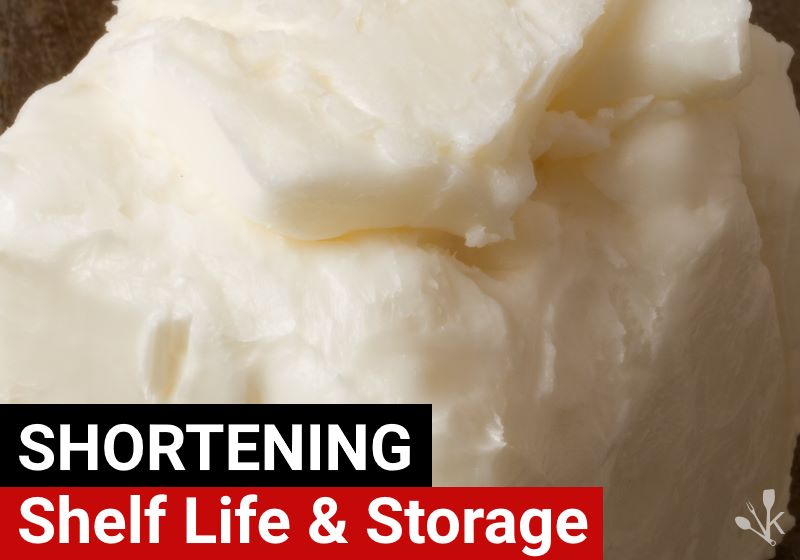You’ve been clearing out your pantry or fridge and found an old container of shortening. It looks fine, but it may not be, so read on to find out what you should do with it.
Does shortening go bad? The short answer is yes. Unopened vegetable shortening can last up to two years before becoming rancid, whereas Crisco can last up to 8 months or 3 months after opening before it goes bad. Expired shortening should not be used and discarded safely.
How Long Does Shortening Last?
In general, shortening has a long shelf life of up to two years, but we like to follow Crisco shelf life dates for all shortening types. You should always check the expiration date of your shortening before using.
Solid Crisco shortening will last up to 8 months while still sealed in its packaging. Opened Crisco shortening can last for about 3 months so long as it is stored properly.
Stored improperly, such as near a hot area like the stove or in a room with direct sunlight, will make shortening go bad much quicker. Always check your shortening before you use it since spoiled shortening will spoil your baked goods.
Things like oil, butter, and margarine are all common fats that are solid at room temperature but tend not to be used as shortening in recipes.
Related | How Much Is 1 Stick Of Butter?
Does Crisco Go Bad?
As Crisco shortening is a vegetable shortening, the answer is yes.
Cans of Crisco will last up to eight months, and the sticks will last a few months less. If you don’t plan to use your Crisco for a long time, consider freezing to extend those dates.
Do You Need to Refrigerate Crisco Shortening?
If you have a cool, dry pantry or cabinet, you can keep your Crisco there.
If you live in a hotter climate or just want to be on the safer side, you may wish to store Crisco in the fridge. You will have to leave it out on the counter to reach room temperature before you use it.
How To Tell If Shortening Has Expired
Shortening will experience changes in color and texture when it has finally expired. The color may become darker yellow versus the white it should be. You will also likely notice an off odor and flavor. This will be apparent in anything you bake with it.

If you suspect that your shortening has spoiled, don’t try to taste it to test. Eating spoiled food can make you sick.
Quick signs to check if your shortening has spoiled:
- Changes in color or texture
- Bad smell or taste
- Mold
- Pests
If your shortening is spoiled, wrap it up securely in plastic to keep the smell in and throw it away. If your shortening is in a sealed container, you may not need to wrap it. Just be sure it stays sealed and isn’t damaged.
Can Shortening Make You Sick?
While it won’t taste good, the worst you should experience is digestive upset from rancid shortening. The more significant risk, particularly with rancid oil, can have long-term health effects. Rancid shortening and lard may also grow bacteria that can give you food poisoning.
If you realize your shortening is rancid after using it to make food, be sure to throw out both the shortening and the food you made with it.
How to Store Shortening
Vegetable shortening is easy to store. You should keep it away from light and in a cool place. If you live in a hotter climate, you can store it in the fridge to keep it from melting.
Shortening Storage:
- Keep it in a sealed container that is opaque or close to it
- Store in a cool place to prevent melting
- Place in the fridge if you are worried about it melting
You can freeze shortening. Just portion it into smaller amounts before you freeze it so that you aren’t trying to chip off a chunk later on.
Remember that light, heat, and oxygen are the enemies of freshness for any food. This is particularly true of oils and fats. Store in air-tight, opaque containers to get a longer shelf life.
Final Thoughts
Knowing when your shortening goes bad can keep you healthier in the long term. Knowing how to store your shortening will also let you keep your shortening fresh longer.
In short, shortening and any fat will have changes to smell, color, and texture if it goes bad. You may also see mold if it is spoiled.
If you want to keep your shortening fresh, keep it away from light, heat, and oxygen. This will let you keep it fresh longer.













